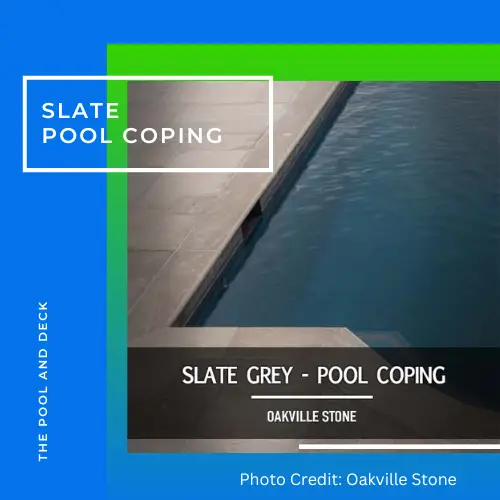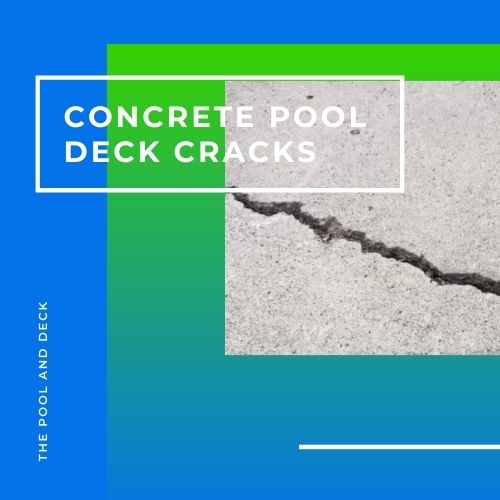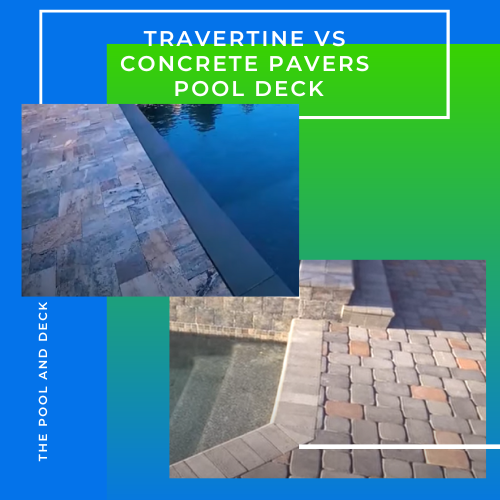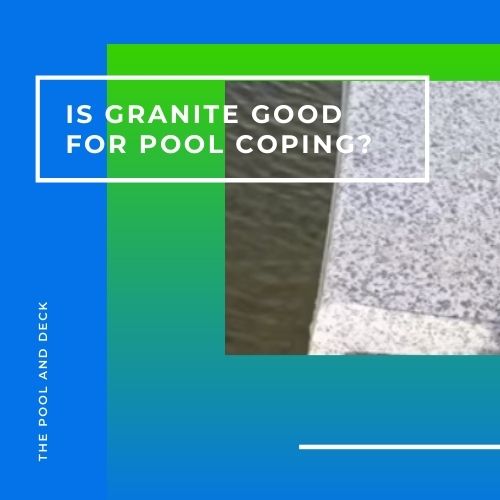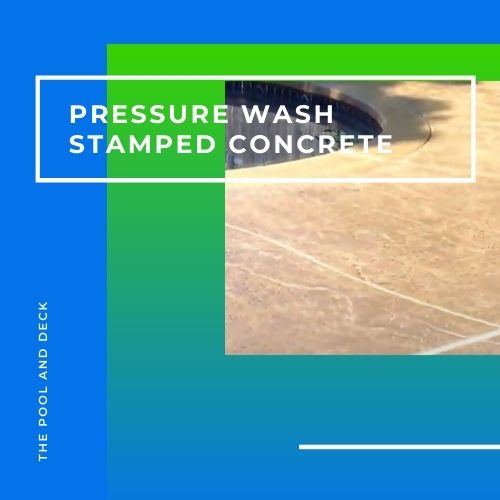Does Stamped Concrete Crack Easily? (Important Stuff Worth Knowing!)
thepoolanddeck.com is a participant in the Amazon Services LLC Associates Program, an affiliate advertising program designed to provide a means for sites to earn advertising fees by advertising and linking to Amazon.com . The website is also an affiliate of a few other brands. The affiliate links never increase your purchase price. We do appreciate your support. Thank you very much!
Table of Contents
Does Stamped Concrete Crack Easily?
The elegance of a wet look stamped concrete pool deck under soft lighting is truly mesmerizing. Wouldn’t you like to get that refined look on your backyard pool deck? What holds you back? The nagging thought. Does stamped concrete crack easily?
Concrete will always crack. It is an intrinsic nature of concrete. So stamped concrete will also crack. After all, it is concrete too! You can reduce cracks and make them less visible by strategically placed concrete joints & proper sealing.
Stamped concrete is used quite often on patios and pool decks mainly because you can get amazing looks at a fraction of the cost. You can personalize the pool deck by choosing the stamping pattern and the color. Stamped concrete pool decks are extremely easy to clean and maintain.
However, stamped concrete does come with a few disadvantages. Like any concrete floor, stamped concrete pool decks will also crack. Another disadvantage is that it is quite difficult to make partial repairs.
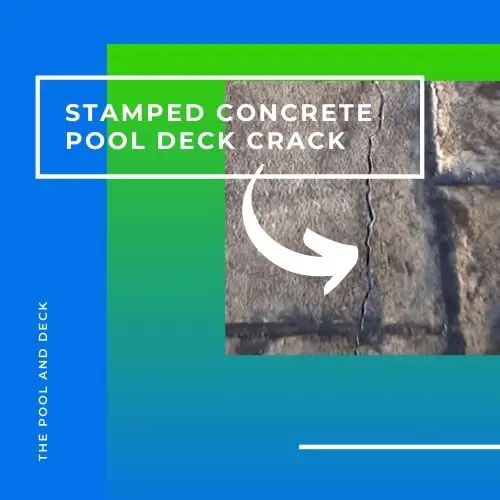
Are Cracks in Stamped Concrete Normal?
Yes. Cracks in stamped concrete are quite normal. In fact, whenever a concrete slab is poured, there are bound to be cracks. It is impossible to avoid cracks.
Concrete has very high compressive strength but low tensile strength. Concrete is also brittle and cracks when subjected to stress. The main reason for concrete slabs cracking is the stress put on the slab due to:
- Excessive shrinking during the curing process
- Ground activity such as movement, shift or subsidence
- Expansion & contraction due to temperature variations
- Water seepage into concrete pores and freezing in winter
How Do You Keep Stamped Concrete from Cracking?
There are a few techniques that contractors use to minimize the cracks or control their location and direction. The most important is the proper use of expansion and control joints.
Control Joints
Control joints are made after the concrete pour, leveling & floating, but while the concrete is still wet and malleable. Concrete has a tendency to crack every 10-12 feet.
Strategically placed control joints encourage the concrete slab to crack at the control joint, rather than anywhere at random. A control joint in a concrete slab is the weak spot. Cracks due to ground movement are more likely to happen at the weak spot.
The depth of the control joint should be about ¼th the thickness of the concrete slab. In other words the control joint should be 1 ½ ” deep for a 6” thick concrete pool deck.
Expansion Joints
Expansion joints are placed before the concrete pour. The purpose of the expansion joint is to give space to the slab to move and not put stress on whatever it abuts.
Some other ways to minimize cracks in stamped concrete pool decks are
- Build at least 4” of base using compactible gravel, crushed stone or recycled concrete. Compact the grade really hard, at each stage, before pouring the concrete.
- Use concrete mix with low water to cement ratio. A ratio of less than 0.5 will give the desired compressive strength with low shrinkage during curing.
- Control the water evaporation rate during the curing process
- Apply two coats of penetrating concrete sealer (wet on wet) using a backpack or hand pump sprayer, once new concrete has cured.
- Apply two coats of topical concrete sealer on stamped concrete using a roller or spray.
How Long Does It Take for Stamped Concrete to Crack?
Cracks Caused by Concrete Shrinkage
Cracks caused by concrete shrinkage during the curing process will appear pretty fast, even within a day or two. And then they may grow as curing progresses.
Shrinkage cracks are typically hairline cracks, hidden in the control joints. The water content in the concrete mix and the evaporation rate are responsible for the frequency and intensity of shrinkage cracks.
Cracks Caused by Ground Movement
The grade below the concrete slab settles in time and causes stress on the slab. The concrete may not crack at all if the movement is small and the rebar placement in the concrete is optimal.
But the cracks can be big too! Such cracks may take a year to appear and several years before they become an eyesore and require major repairs. Heavy rains or some seismic activity can cause them to appear earlier.
Cracks Caused by Temperature Variation
Cracks caused by variations in temperature or due to the freeze thaw cycle, will also not appear immediately. You may notice them after a severe winter or a particularly hot summer.
Can You Fix a Crack in Stamped Concrete?
For the most part, cracks in stamped concrete pool decks are cosmetic issues rather than structural defects. Having said that, you should attend to the cracks in the concrete as soon as you notice them.
Stamped concrete cracks
- Are ugly and diminish the beauty of your pool deck
- Fill up with dust & grime which are difficult to clean
- Can be a breeding ground for algae, mold, mildew, etc.
- Can be home to small insects, particularly ants
- Allow water & moisture to seep into the concrete & weaken it
- Let water accumulate and freeze in the cracks, pushing them wider
DIY Fix for Thin Cracks
You can fix thin cracks in stamped concrete using a concrete sealant. The trouble is most sealants come in “gray” color to match standard concrete. So you have to use some creativity here.
Buy a flexible sealant for filling concrete cracks. Sikaflex Crack Flex Sealant is a good product. It is a high performance, textured polyurethane sealant, which flows and is self-leveling. Unfortunately, like any other concrete sealant, it comes in gray color.
Get a cement color that best matches the color of the stamped concrete with the crack. Use Quikrete Liquid Cement Color as it is easy to mix. It is available in five colors: Charcoal (No. 1317-00), Brown (No. 1317-01), Buff (No. 1317-02), Red (No. 1317-03), and Terra Cotta (No. 1317-04).
Use masking tape around the crack such that only the crack is visible. You do not want the sealant to smudge the area around the crack.
Next take out some sealant in a small plastic can, pour liquid color in it and mix with a spatula. Pour the colored sealant over the crack, guiding and smoothing it with the spatula. The sealant flows and is self leveling, so it will be easy.
DIY Fix for Wider Cracks
The process is the same as above. The only difference is that you will need to clean out the crack and fill it with a cement mortar first. Of course, leave space for the sealant with liquid color to camouflage the crack.
Thank you very much for reading the post. I do hope you found it informative and helpful.



